Parquet board or laminate – which is better and more reliable, what are the differences?
Laminate or parquet board is the main dilemma of most people who are going to buy finishing material for the floor. Let's look at the pros and cons of each option and try to choose the best one - both in terms of design and in terms of practicality, durability, ease of installation, maintenance and repair.
What is laminate?
Laminate is a multi-layer finishing material, each part of which performs a specific task:
- The first and the lowest. Made from paper impregnated with resins. It gives rigidity to the laminate board, protects the main part from damage and sometimes creates sound insulation - if there is an appropriate substrate.
- Main load-bearing layer – from wood HDF (a more durable analogue of fiberboard) board. The higher the quality of the slab, the better the laminate repels moisture and the less it bends.
- Decorative layer. Here the manufacturer applies a pattern that imitates wood, stone, tile and other textures.
- The top layer is made of acrylic or melamine resin. Helps the laminate not to wear off or become scratched longer. Sometimes additional texture is applied to the top layer to highlight the design.
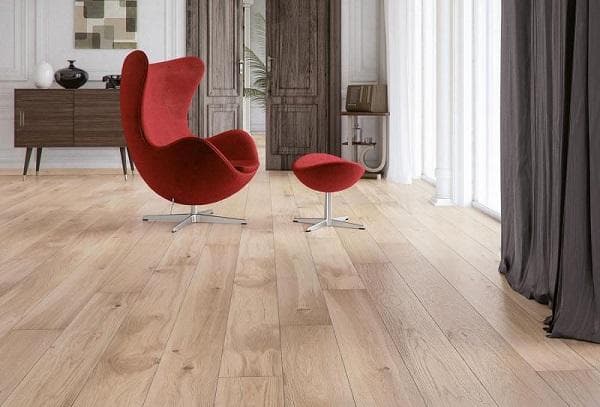
The quality of the laminate directly depends on the class - it is designated by numbers from 31 to 34 (the higher the better) and shows the strength of the wood board. 31 is best suited for rooms where people rarely walk (especially with shoes) - for example, a bedroom.32 – for any living rooms and public spaces with light load. And 33 and 34 will fit perfectly into the office or even more - they will withstand wheelchairs, sharp heels, a large amount of furniture, and even regular dance classes.
However, not only numbers show the difference in product quality. There is also the AC marking, which determines the strength not of the HDF board, but of the upper protective layer. AC3 is only suitable for living rooms, ideally those where there is least foot traffic. AC4 - for any residential premises, as well as for some public premises - those where the floor bears a relatively small load. Finally, AC5 is the most durable type of laminate that can be installed even inside an industrial facility.
What is a parquet board?
Externally, parquet boards look like solid boards or piece parquet. But, unlike them, it does not consist of a single piece of wood, but of several layers - as a rule, there are three of them. The layers are laid perpendicularly, which adds additional strength to the material and eliminates internal stress.
Compared to solid boards, parquet boards are easier to install due to the presence of special locks, tongue-and-groove joints, and lower requirements for floor evenness, humidity and temperature during installation. It is also more resilient to climate change and, finally, cheaper.
However, compared to other types of parquet, parquet boards are less durable and durable. And, unlike a piece board, it cannot be used to create complex patterns using artistic styling.
The top of the board is coated with varnish (glossy or matte) or an oil layer. The varnish protects the material from scratches and deformation, and no toxic substances are added to its composition.Below is the front (also called working) layer of wood, made of valuable species: oak, walnut, cherry, ash, etc. It not only adds strength to the coating, but also performs a decorative function. Next is a layer of spruce or pine slats located perpendicularly. Finally, at the very bottom is a coniferous plywood board.
What is the difference?
Many people believe that laminate is a harmful and not environmentally friendly material, and parquet boards are made entirely of natural materials. This is not entirely true. Although all layers of parquet consist of natural wood (only occasionally manufacturers make the lower part from HDF), glue is also used to hold them together. So it is incorrect to call a parquet board completely natural.
In turn, laminate does contain synthetic resins (both in the outer laminated coating and in the very bottom layer). But it does not emit harmful substances such as formaldehyde into the air - provided that you bought a certified product and not a low-quality fake. At the same time, laminate can cause allergies and can collect static.
Pros and cons of laminate
Pros:
- A good laminate will cost less (on average 40%) than a parquet floor of comparable quality.
- Laminate tolerates contact with liquids more easily.
- The laminated coating contributes to wear resistance - it will be difficult to scratch it with furniture on wheels or press it with a heel, so it will retain its original appearance longer.
- More design options. From textures that imitate wood and marble, to models with patterns, designs and complex textures.
- Easy to care for. Unlike parquet flooring, you don't need special wood treatments or sanding.In addition, the material gets dirty less, since the top layer repels dust.
- Does not require restoration.
- Can be used in conjunction with a heated floor system.
- Easy to install.
Flaws:
- Although laminate is not so afraid of water, it only tolerates short-term contact with liquid.
- Much more difficult to repair. You will likely have to remove the entire floor to replace a single damaged piece.
- There is a high probability of encountering low-quality products. These can be either fakes (not necessarily cheap ones) or low-cost goods that simply do not meet the standards. In the second case, you may encounter harmful chemicals, low strength HDF boards or a coating that will quickly become scratched.
- Shorter service life compared to parquet boards (on average 10-15 years).
Below we will consider the pros and cons of parquet boards.
Pros and cons of parquet boards
Pros:
- No matter how expensive laminate is, it cannot replace the status look of parquet boards. Premium quality, classic design and pleasant tactile sensations when walking - this is the uniqueness of parquet.
- Ideal sound insulation. Laminate achieves such indicators only if there is a special substrate, which affects the price tag.
- Long service life. High-quality parquet will last up to 35 years, and expensive options made from strong wood species suitable for the climatic region - up to half a century.
- Simply install (even without resorting to the services of specialists) and repair.
- Does not cause allergies because there are no synthetic resins in the composition.
Minuses:
- Difficulty in care. Parquet should be cleaned only with special products – without caustic chemicals.The material is sensitive to moisture and temperature changes. It is also afraid of dry air - so it can become covered with cracks during the heating season.
- For longevity, the floor will have to be restored, preserved, sanded and re-varnished, which in some sense eliminates the advantage of a long service life.
- Parquet wears out more easily. Therefore, it is better to put plastic tips on furniture legs.
- Due to temperature sensitivity, using an underfloor heating system may not be the best idea.
For clarity, we have collected all the most important things about parquet boards and laminates in one comparative table:
| Laminate | Parquet board | |
| Price | High-quality laminate starts at a price of about 1000 rubles. An important nuance - due to the ease of installation, specialists will charge less money for the work. | To lay reliable parquet flooring that will not have to be treated and restored very often in the near future, you will have to pay one and a half to two times the amount. |
| Soundproofing | High. | Better than laminate. |
| Moisture resistance | Withstands only short contact with moisture. | Low. |
| Durability | The service life of laminate 31-32 classes is about 15 years. More wear-resistant options marked 33-34 will last 20-25 years. | With proper care, a high-quality parquet board will last up to 35-50 years without problems. |
| Advantages | 1. Wide variety of designs. 2. High wear resistance. 3. Easy to maintain. Does not require restoration. |
1. Premium look and feel of natural wood when walking. 2. Ideal sound insulation. 3. Much easier to repair. |
| Flaws | 1. It is also afraid of moisture, although not as much as a parquet board. 2. Much more difficult to repair. 3. More likely to run into marriage. |
1.Sensitivity to moisture, temperature changes, dryness and detergents (except special chemicals). 2. Easily scratched. 3. It will not be possible to heat the floor due to temperature fluctuations. 4. Problematic care. 5. Less variety in design. |
Which is better to choose?
As can be seen from a comparison of the pros and cons, laminate is a more practical material. It is easier to clean, it does not require you to be careful, care and restore. Plus, it's more versatile.
Models marked 33 and 34 are suitable not only for apartments, but also for offices, some industrial facilities, sports and many other tasks. Finally, laminate fits into any interior: from classic, where options with a wood texture are suitable, to modern and high-tech.
Parquet boards are a time-tested, solid classic that will ideally complement rooms with a status, elegant look and predominantly environmentally friendly materials. Parquet will appeal to those who:
- afraid of unnatural materials and all kinds of “chemistry”;
- doesn’t want to run into fakes and low-quality brands, of which there are really a lot of laminates;
- loves the pleasant sensations when walking and ideal sound insulation;
- wants a reliable floor that will not have to be replaced for many decades, and if damaged, it can be easily repaired.
But the price for this is a higher price and the vagaries of care.
As a result, it is impossible to single out a clear winner. It is important to take into account all the nuances before making a decision, so that you can enjoy the floor for a long time and not criticize laminate in reviews for being expensive and complex repairs, or parquet for marks from chair wheels.
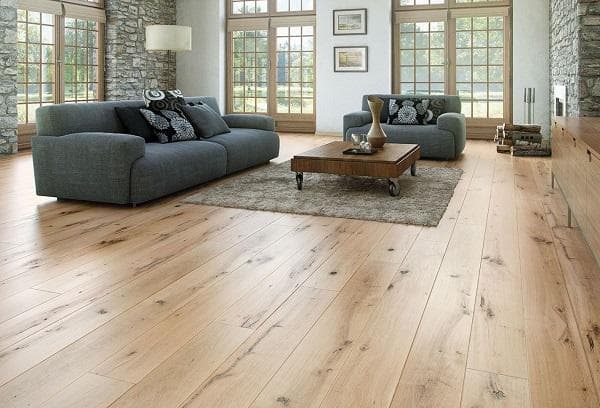
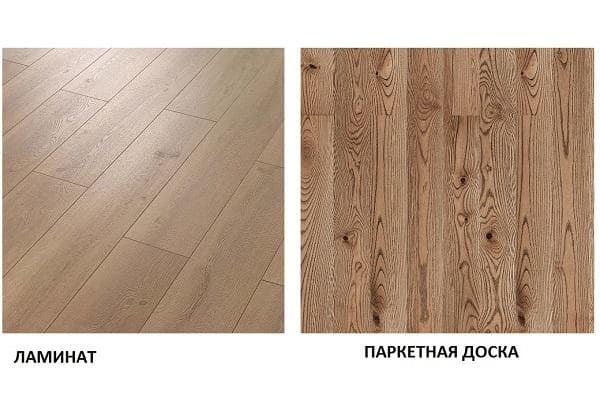
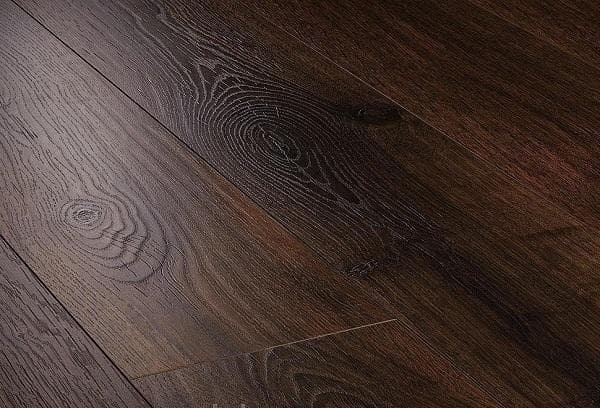
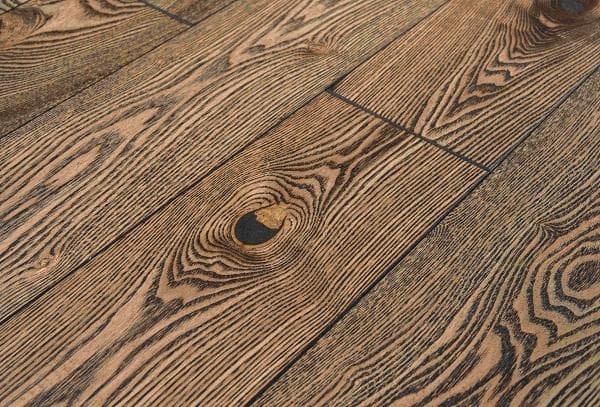
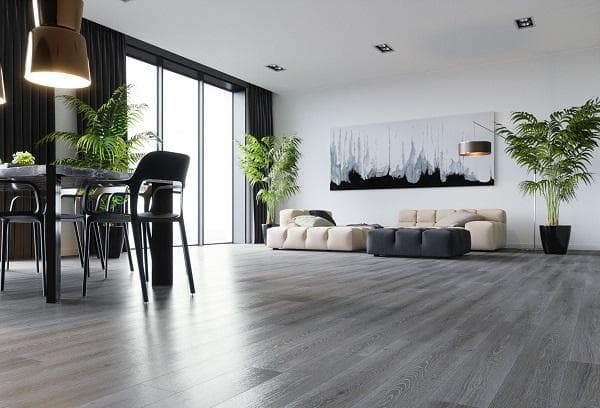
I am for parquet, a time-tested classic, although when we were choosing, even the laminate was of very decent quality and did not differ much in appearance from parquet.